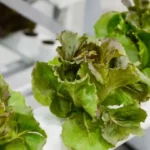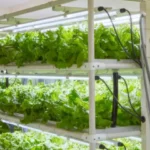Are you tired of dealing with complex hydroponic systems that require constant monitoring and maintenance? If you’ve struggled to keep up with intricate pumps and piping, you’re not alone. Many gardeners like you are seeking a simpler, more efficient way to nurture their plants. That’s where the Wick System hydroponics comes in.
One of the main benefits of Wick System hydroponics is its simplicity and low cost, which are great for beginner and seasoned growers alike. Here are some key advantages:
- Low Maintenance: Wick systems are easy to set up and require minimal maintenance. Once the system is in place, there are no moving parts or complex systems to manage.
- No Electricity Required: Wick systems rely on capillary action to deliver water and nutrients to the plants, so they do not require electricity to operate. This makes them a cost-effective and energy-efficient option for growing plants hydroponically.
- Suitable for Beginners: Wick systems are a great option for beginners in hydroponic gardening. They are easy to understand and require little knowledge or experience to set up and maintain.
- Space-Saving: Wick systems can be set up in small spaces, making them ideal for indoor gardening or areas with limited space.
- Uniform Watering: The wick provides a continuous and uniform supply of water and nutrients to the plants, helping to prevent overwatering or underwatering.
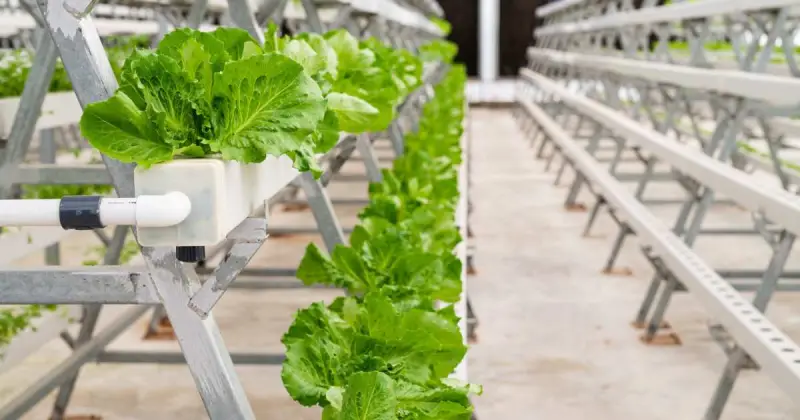
Are you curious about the Wick System’s unique advantages and limitations and how it differs from other hydroponic alternatives? In the upcoming sections, we’ll explore how this minimalistic approach can yield impressive results for your plants.
In this guide, we’ll explore how this straightforward system can revolutionize your hydroponic gardening experience and offer a hassle-free solution to your growing needs.
Let’s explore the system’s practical benefits and compare it to more complex hydroponic setups. The Wick System can simplify your gardening routine and achieve outstanding growth. Read on to learn all you need to know!
Humble Highlights
- Save time by discovering the basics of Wick Systems and why it’s one of the most simple and low-cost choices for beginning gardeners so you can spend more time growing homegrown food!
- Discover the advantages and limitations of these low-maintenance hydroponic systems so you can make the most informed choice to meet your needs AND why this unique system can be scaled up or down, making them a versatile option for your space requirements.
- Uncover the best plants you can grow in Wick Systems PLUS 6 lesser-known options so you can cultivate various delicious crops suitable for your setup.
Wick System Basics
In hydroponics, the Wick System relies on capillary action to transport nutrients. This method uses a wick to draw nutrient solution from the reservoir to the grow tray where plants are placed. The wick ensures a continuous water supply and is essential for the plant roots. To improve oxygen availability, an aeration system can be added to the reservoir, promoting healthier root growth.
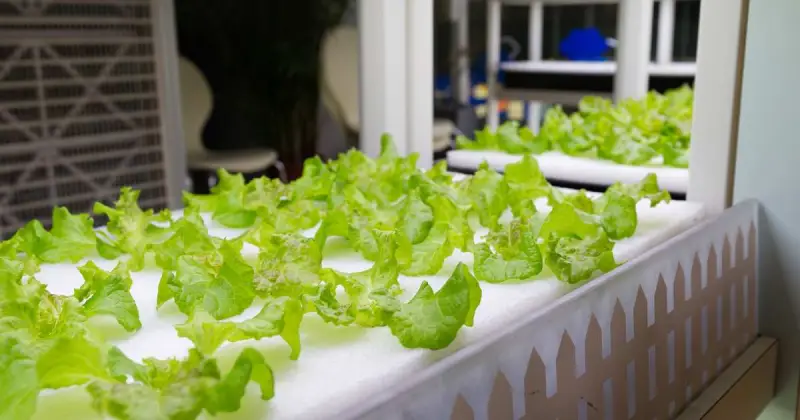
Wick Systems are beginner-friendly and easy to set up. They are suitable for growing herbs and lettuce in a controlled environment. Regular monitoring is essential to prevent nutrient buildup, affecting the system’s efficiency and plant health. Maintaining a consistent cleaning schedule ensures optimal performance and thriving plant growth in your Wick System. 1
A lesser-known fact about Wick Systems is that they can be prone to uneven nutrient distribution. Since the nutrient solution is drawn passively through the wick, it may only reach some parts of the growing medium uniformly.
This uneven distribution can lead to some areas of the root system receiving more nutrients than others, potentially impacting plant growth and health. To mitigate this issue, some growers use multiple wicks or periodically adjust the position of the wick to ensure more even distribution.
Components Of Wick System
The essential components of a Wick System are the grow tray, reservoir, aeration system, and wicks for efficient nutrient transportation. The grow tray utilizes capillary action to deliver the nutrient solution directly to the plant roots, ensuring effective absorption without net pots.
Below the grow tray, the reservoir acts as the source of the nutrient solution, providing a constant supply of fertilized water. An aeration system, which consists of air stones and pumps, oxygenates the roots to promote plant health. Wicks play a crucial role in connecting the reservoir to the grow tray, facilitating the movement of nutrients through capillary action. 2
| Components | Description |
|---|---|
| Grow Tray | Utilizes capillary action for efficient nutrient absorption |
| Reservoir | Holds fertilized water beneath the grow tray for nutrient supply |
| Aeration System | Includes air stones and pumps to oxygenate roots |
Wick System Advantages
Cost-efficient and user-friendly, Wick Systems provide a practical option for hydroponic gardening with low maintenance needs. These systems are perfect for beginners due to their simple setup and upkeep, requiring minimal tools.
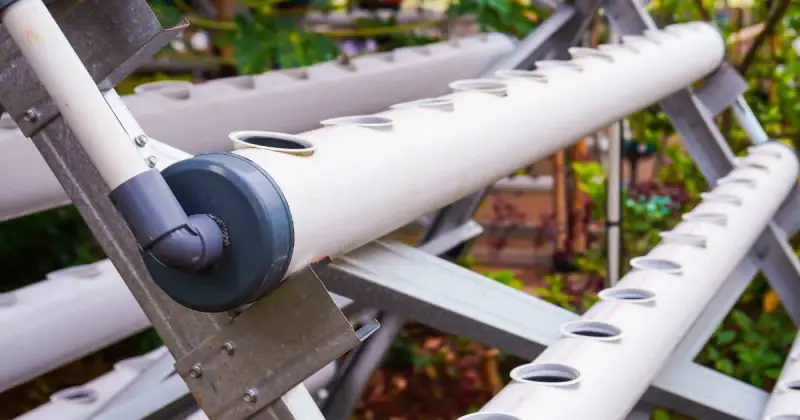
Their compact design makes them ideal for small spaces, such as indoors or balconies, enabling cultivating various plants even in limited areas. Wick systems are versatile and can sustain herbs, leafy greens, and small fruiting plants, allowing the growth of a variety of crops.
Furthermore, Wick Systems are water-wise, absorbing water as required and effectively conserving it. This efficiency saves water and ensures that your plants get the right amount of moisture for healthier growth. 3
Wick Systems offer a great choice for hydroponic gardening enthusiasts who aim to grow diverse plants because they are cost-effective, easy to care for, and suitable for small spaces.
Hydroponic Wick Systems don’t have to be complicated. The process should be as easy to set up as the vegetables you grow. Wick Systems are excellent for cultivating smaller produce and root vegetables like leafy greens, strawberries, and various herbs. The video below walks you step-by-step through creating your Wick System. You’ll be up and growing in no time!
Wick System Limitations
When considering the limitations of wick systems in hydroponics, it’s important to acknowledge their constraints in supporting a wide range of plant types and sizes. Here are some fundamental limitations to be aware of:
- Limited Plant Variety: Wick Systems have a slow nutrient supply, making them less suitable for a broad range of plants.
- Nutrient Delivery Inefficiency: Larger plants or those that bear fruits may not thrive well in Wick Systems due to the inefficiency in delivering nutrients.
- Risk of Nutrient Buildup: There’s a potential risk of nutrient buildup in the growing medium, which can lead to issues like root rot.
- Regular Cleaning Required: The system must be regularly cleaned to prevent problems such as toxic mineral salt buildup.
These limitations highlight the challenges of using Wick Systems, as nutrient delivery can be slow, leading to issues with certain plant types and the system’s overall health. 4
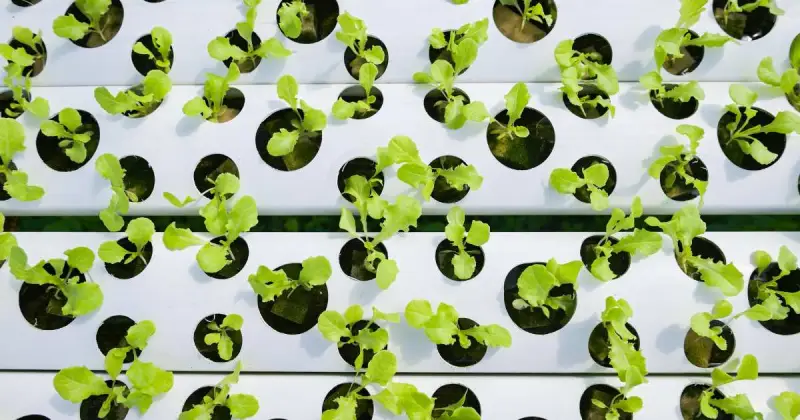
Best Plants for Wick System
When selecting plants for a Wick System, opt for basil, mint, lettuce, spinach, and strawberries. These plants thrive in this hydroponic setup due to their low-nutrient needs and ability to adapt to the slow liquid movement in Wick Systems.
Here is a breakdown of ideal plants for a Wick System:
- Herbs: Basil, Mint
- Leafy Greens: Lettuce, Spinach
- Fruiting Plants: Strawberries
- Starting Seeds: Various plants
- Propagating Cuttings: Various plants
Basil, mint, lettuce, and spinach do well in Wick Systems because they require minimal nutrients. Although strawberries are fruiting plants, they can also flourish in Wick Systems with moderate water needs. 5
Wick Systems are also excellent for starting seeds and propagating cuttings, fostering strong root growth. The controlled environment ensures plants receive the proper moisture and nutrients, supporting their healthy development.

Here are a few lesser-known plants that can thrive in Wick Systems in hydroponics. As you can see, they are all leafy greens, which do exceptionally well.
1. Bok Choy: This Asian green is easy to grow in a wick system and adds a unique flavor and texture to dishes.
2. Arugula: Arugula has a peppery taste and grows well in a wick system, providing a tasty addition to salads and sandwiches.
3. Endive: Endive is a slightly bitter green that can be grown in a wick system and adds complexity to salads and other dishes.
4. Mizuna: Mizuna is a Japanese mustard green that grows well in a wick system and adds a mild, peppery flavor to salads and stir-fries.
5. Tatsoi: Tatsoi is another Asian green that thrives in a wick system and has a mild, mustard-like flavor.
6. Sorrel: Sorrel is a leafy green with a tart, lemony flavor that can be grown in a wick system and used in salads, soups, and sauces.
Conclusion
The Hydroponic Wick System is a practical choice for beginners and those interested in cultivating smaller plants like herbs and lettuce.
While this system may have limitations in supporting larger plants with deep water requirements, its simplicity and low maintenance make it a convenient option for home gardening, especially for new gardeners who are just getting started in hydroponics.
However, despite its constraints, the Wick System offers a cost-effective and efficient way to grow fresh produce, making it a rewarding experience for individuals of all skill levels.
Do you grow your hydroponic vegetables with a Wick System? We’d love to know which selections you successfully grow and how long you’ve practiced. Drop us a line below in the comment section and give us some insider tips on how you cultivate your crops, along with a tip or two!
SOURCES
- Wikipedia – Wicking Bed
- ResearchGate – Performance Of Wick Irrigation System Using Self-Compensating Troughs With Substrates For Lettuce Production
- National Library Of Medicine, National Center For Biotechnology Information – Hydroponics: Current Trends In Sustainable Crop Production
- ScienceBuddies.org – Hydroponics: Gardening Without Soil
- EchoCommunity – Wick Irrigation



